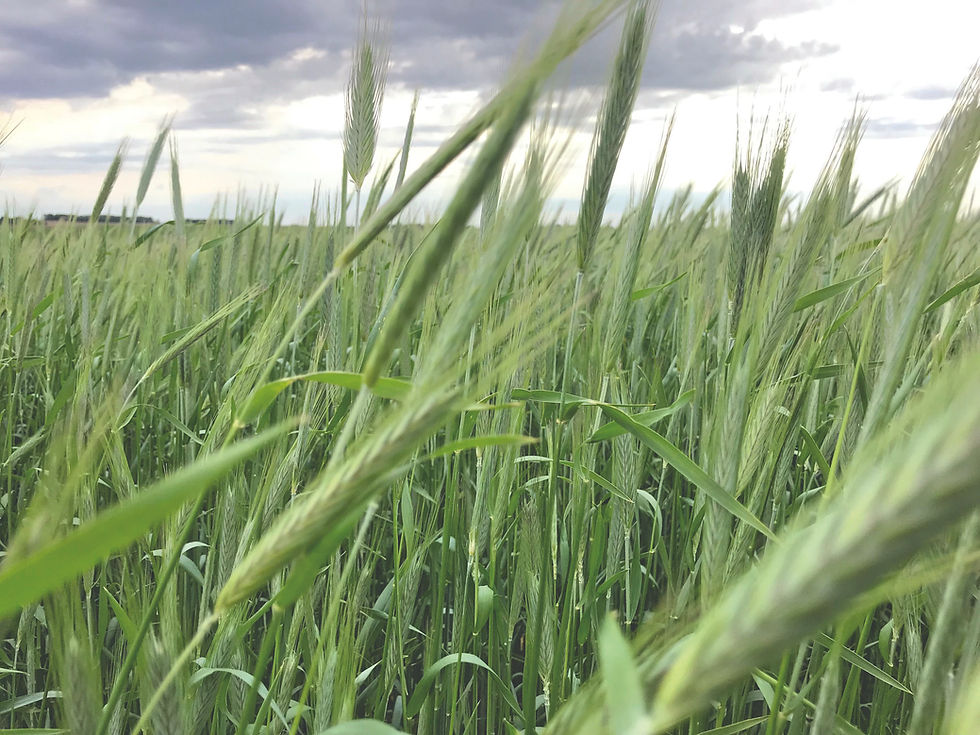Millborn Seeds | September 2022
- makayla274
- Sep 2, 2022
- 3 min read
Rye Cocktails For Feed
contributed article by Justin Fruechte, Forage & Cover Crop Specialist
Millborn Seeds, Brookings, S.D.
millbornseeds.com

In the world of forages and cover crops, cereal rye has quickly become one of the most sought-after plant species for a wide range of reasons. This winter annual grain has shown great versatility for both livestock producers and crop farmers.
Cereal rye has the best winter hardiness of all winter annuals, which has made it very useful in short growing windows in the upper Midwest. As a winter annual, it has the opportunity to provide spring growth in a time period where nothing else is growing. That early spring growth has shown to reduce erosion and improve water infiltration. The other unique attribute is its ability to suppress weeds. Rye has an allelopathic effect on other plant species, especially small-seeded broadleaves and grasses. This has proved to be very useful in crop rotations where soybeans follow the rye, reducing an herbicide pass.
As a feed source, rye has the versatility to be a grazing, haying, or silage crop. Grazing rye in late April through May has filled a grazing void when newborn calves are needing dry ground. As a hay or silage crop, it’ll be ready to harvest in late May, leaving a nicely timed window to plant another crop.

Cover crops in general have evolved from single species to multiple species mixes and we are seeing that trend take off with rye. Multispecies mixes have shown us that diversity promotes soil biology and hedges weather and soil variabilities. The benefits we’ve seen from rye as a single species have been grand but can be expanded in a multispecies blend.
The utilization of other winter annuals and cool season annuals in combination with cereal rye has made for better forage opportunities. Brassica species such as turnips, rapeseed, or radishes are great options to blend with rye if you are looking to bump your fall grazing yields. These plants are very nutritious and palatable and will prolong grazing over a straight stand of rye. Other species like hairy vetch or red clover are solid choices for boosting forage quality on your spring harvested fields. These legumes have higher crude protein levels than cereal grains, making for a higher-valued hay or silage that next spring.
As fall draws near, take a look at your seeding window options. Winter annuals can be planted from August through mid-October. Corn silage harvest provides a perfect window to plant back into and if soybean harvest is early, we should also have time in early October for a planting. Aerial application over corn fields is becoming a sound practice when rye is used. These fly-on blends should happen in late summer as our corn starts to defoliate.
Forage supplies won’t be abundant for cashing winter supplies. The low-cost feed producer needs to get creative to find sources of feed. Since we are back in a high-cost feed market, if we have a planting window to grow feed, the reward will outweigh all risks.
Photos courtesy Millborn Seeds
learn more millbornseeds.com
Millborn Seeds, Brookings, S.D.
The team of folks at Millborn Seeds have roots that run deep in farming, agriculture, and in the overall respect for the landscape. They opened their doors in 1987 and continue to walk alongside farmers, ranchers, and landowners across thousands of acres throughout the Midwest.





Comments